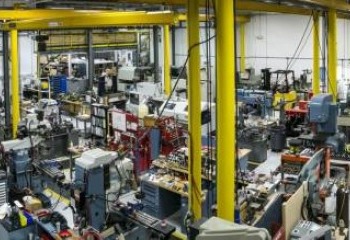
Insights
For Success, Invent In and Out of the Lab
April 7, 2015

April 7, 2015
Bell Labs. Skunk Works. IBM. These labs have attained almost mythical status for their record-setting pace of innovation in the 20th century. And while offering inventors a central location to brainstorm still yields benefits, it’s no longer enough for companies to just focus on R&D laboratories.
IV Lab’s Instrument Shop offers a broad range of equipment and in-depth knowledge for scientific instrument manufacturing and testing.
A model of isolation simply doesn’t allow companies to build the unusual collaborations that can elevate a good invention to a breakthrough innovation.
This is not to say that labs aren’t important – Intellectual Ventures relies heavily on its laboratory to develop the technology behind Global Good’s Arktek device or the Echodyne MESA radar. But overemphasizing a lab’s singular role in inventing can result in overlooked opportunities. That’s why IV leverages an extensive network of inventors to brainstorm on new ideas.
Evidence shows that siloes – like only tasking laboratory employees with finding innovative approaches – can limit a company’s ability to ask the right questions and recognize the best opportunities for innovation. A more flexible approach lets innovators adapt to changes in the marketplace and contribute to a global invention ecosystem.
At Intellectual Ventures, we’ve found that the most innovative teams often use an interdisciplinary approach to strengthen the value of an existing invention. For example, when inventors from Raisio came to Intellectual Ventures to discuss how to improve and market their innovative feed that increases the fat content in dairy cow’s milk, IV leveraged its network of inventors to host a series of brainstorm sessions.
The inventors widely praised the sessions – which included experts in mitochondrial function, biochemistry, and metabolism – as very productive. And Raisio and Benemilk have gone on to file 10 additional patents enhancing the original invention.
Finally, there’s another reason to embrace the interdisciplinary model: cost. The R&D labs of the past were incredibly expensive. But companies today have communications tools that AT&T, Lockheed Martin, and IBM didn’t. Thanks to inventions like Skype, researchers don’t need to be in the same room or even on the same continent to collaborate.
Because the world is global, dynamic, and smaller than ever, collaboration offers a greater pool of businesses have the tools for breakthrough innovation at their fingertips. That’s great news for our ability to solve the world’s greatest challenges while fostering a strong invention ecosystem.